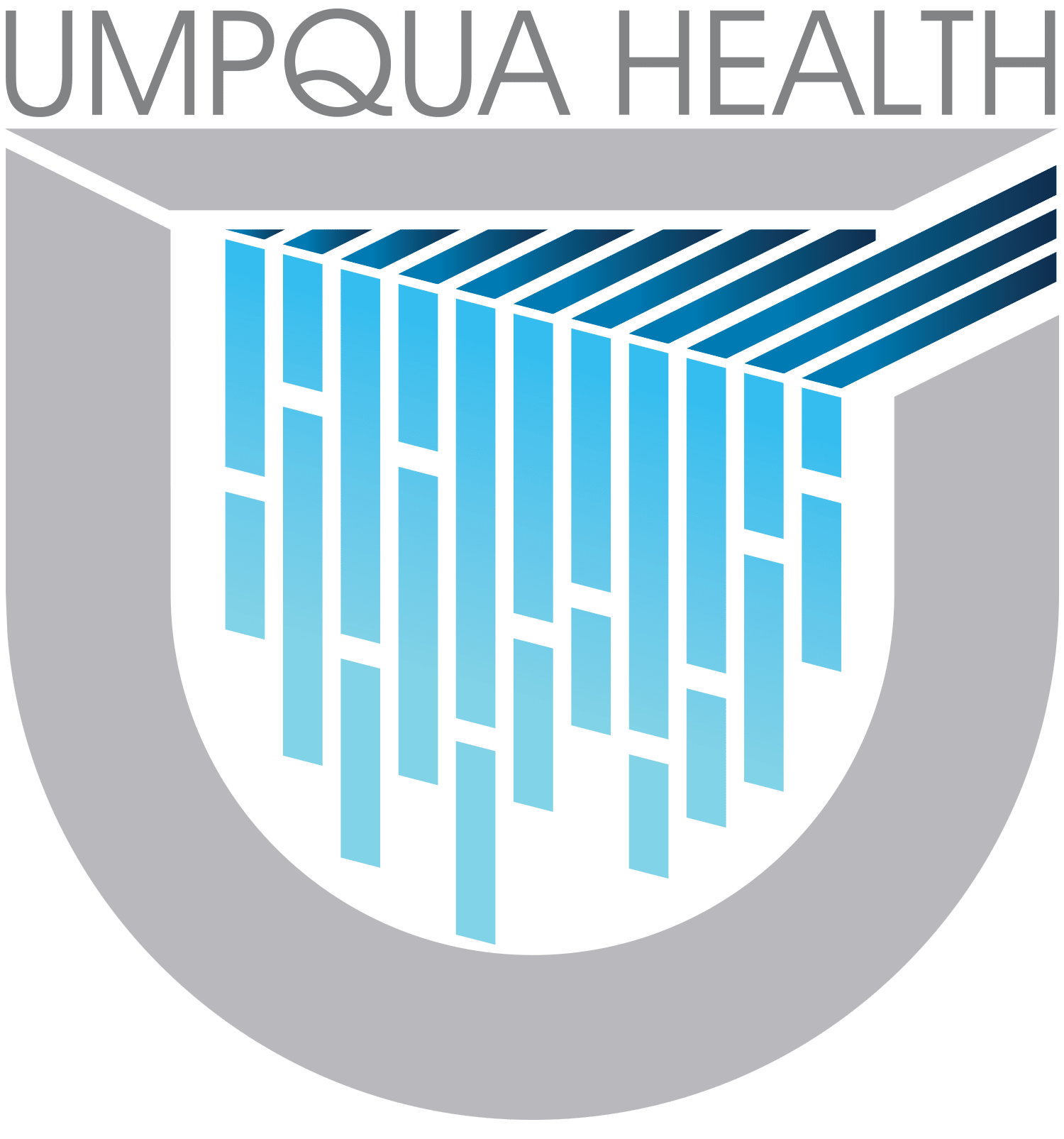Provider Newsletter December 2018
 Practice Tactics
Practice Tactics
New Form for Member Assignment
Umpqua Health Alliance (UHA) is pleased to announce a new, easy way for members to change their Primary Care Provider (PCP) while at your office. Now, when a patient who wishes to be assigned to you for primary care presents to your office, you can now have the member complete and sign the PCP Change Request Form.
Previously the PCP’s office had to call UHA Member Services in the member’s presence to request a PCP change, or the member had to call Member Services themselves to request the change. With the new PCP Change Request Form, providers (or members) need only fax the signed and completed form to Member Services at 541-677-6038. This fax number is also listed on the form for reference.
The PCP Change Form is posted on UHA’s website for your convenience here, and can be downloaded at any time.
UHA hopes this new option will help expedite the PCP Change request process, making life easier for both our providers and members.
Change to Sterilization Consent Requirements Effective 1/1/2019
Starting January 1, 2019, the Oregon Health Authority (OHA) will no longer require a sterilization consent form for procedures that are unrelated to voluntary sterilization but would result in sterilization (such as ovarian cancer surgery). This means:
- Providers will no longer need to collect a consent form for procedures that cause sterilization if the purpose of the procedure is something other than sterilization.
- OHA will still require consent when the purpose of the procedure is sterilization.
Starting January 1, some claims will process without suspending for a consent form. However, some claims will continue to suspend for additional information, such as chart notes. In these cases, providers will need to submit documentation that shows:
- The patient’s reproductive capacity remained intact after the procedure, or
- The patient was sterile before the procedure, or
- The purpose of the procedure was to treat illness/injury and not to cause sterilization.
To learn more about OHA’s sterilization consent requirement, see Oregon Administrative Rule 410-130-0580.

On the Lookout
Norovirus
Winter is a time for more than colds and flu. It is also a time when noroviruses are spread more often. Here are some facts that we would like to share so that, together, we can help contain outbreaks of this nasty bug.
Clinical Description
Noroviruses, named for the first-recognized outbreak in Norwalk, Ohio in 1968, belong to the Caliciviridae family. Noroviruses are non-enveloped viruses, so they are not susceptible to alcohol-based disinfectants. There are six genogroups (G) of norovirus, of which GI, GII, and GIV afflict humans. Due to their genetic diversity, infection with one noroviral strain does not confer immunity against other strains. GII norovirus strains, and in particular, GII.4 strains, account for most norovirus outbreaks in long -term care facilities (LTCFs).
Transmission
Norovirus is highly contagious due to its extremely low infectious dose. Transmission of norovirus is fecal-oral, primarily through person-to-person contact, but also through:
- Contaminated surfaces (i.e., fomites)
- Contaminated food
- Contaminated water (including ice)
- Swallowing of norovirus aerosolized in vomitus
An infected person will begin to shed norovirus particles a few hours before symptoms begin and can continue to shed for more than 2 weeks. Peak viral shedding occurs at 2 to 3 days after symptom onset, with a median amount of norovirus shed of 95 x 109 copies per gram of feces.
Symptoms
Norovirus symptoms begin a median of 33 (range, 12–48) hours after exposure to the virus. Symptoms may include:
- Vomiting
- Diarrhea, typically watery and without blood
- Nausea
- Low-grade fever
- Abdominal cramps
- Malaise
- Chills
Treatment
There is no specific treatment for norovirus infection. Because many patients have both vomiting and diarrhea, precautions should be taken to avoid dehydration, especially in the very young and very old.
Reporting an outbreak
Norovirus infection is not reportable per se in Oregon, but Oregon Administrative Rule 333-018-0000 requires that all outbreaks of any disease be reported to and investigated by the Local Health Department (LHD). An outbreak is defined as more cases than expected for a given population and time period. In practice, an outbreak is two or more cases among people not from the same family or household. Outbreaks, especially in winter, occur in schools, child care centers, and long-term care facilities.
Controlling an outbreak
Public health officials will work with the staff of the outbreak facility to:
- Track the cases’ symptom profiles and personal information;
- Perform stool collection and laboratory testing;
- Educate all staff of the outbreak and the suspected pathogen’s symptoms and preventive measures;
- Remind employees not to work when sick; and not return until at least 48 hours after symptoms have resolved;
- Implement facility-wide control measures:
- Restrict sick students from school until asymptomatic for 48 hours;
- Cancel group activities until the outbreak has been declared “over”;
- Deep clean bathrooms and frequently touched surfaces;
- Enforce strict hand washing (supervised hand washing for younger students);
- Limit visitors;
- Post Gastroenteritis Outbreak Notice on all entrances to the facility.
- Train staff on proper and effective handwashing;
- Clean-up of vomitus and diarrhea with a product that is labeled to kill norovirus, using proper strength and contact time, per label;
- Train staff how not to move norovirus from one patient to others;
- Use personal protective equipment when cleaning and disinfecting to avoid becoming ill.
Cleaning and disinfecting
 Remove vomit or diarrhea right away! Wipe up vomit or diarrhea and then use kitty litter, baking soda or other absorbent materials to absorb liquids. Use soapy water to wash all surfaces that had contact with vomit or diarrhea, as well as nearby high-touch surfaces (e.g., door knobs, toilet handles, hand rails). Rinse with plain water and wipe dry. Because viruses and other germs can remain on surfaces even after cleaning, all surfaces must then be disinfected.
Remove vomit or diarrhea right away! Wipe up vomit or diarrhea and then use kitty litter, baking soda or other absorbent materials to absorb liquids. Use soapy water to wash all surfaces that had contact with vomit or diarrhea, as well as nearby high-touch surfaces (e.g., door knobs, toilet handles, hand rails). Rinse with plain water and wipe dry. Because viruses and other germs can remain on surfaces even after cleaning, all surfaces must then be disinfected.
Disinfect to kill remaining germs. An Environmental Protection Agency-registered commercial virucide should be used. If an EPA-registered virucide is not available, then the facility should use bleach. CDC recommends a chlorine bleach solution with a concentration of ~3500 ppm (this can be achieved by adding 1 cup of household bleach to a gallon of water) on all surfaces. Leave the surface wet for ≥5 minutes or follow the directions on the commercial cleaner to allow sufficient time for the disinfectant to work. Disinfect frequently used surfaces such as:
- Chair handles and backs
- Door handles
- Hand railings
- Counters
- Frequently used items (toys, keyboards, mouse, changing table, etc.)
Your assistance by notifying public health of suspected outbreaks will go a long way to controlling norovirus. You can contact DPHN by phone (M-F 8 a.m. – 5 p.m.) 541-677-5814; after hours 541-440-4471; FAX 541-464-3914; or online and click on Report a Communicable Disease to report electronically.
Winter Driving
 Douglas Public Health Network reminds you that driving in winter can be dangerous. We suggest that all staff, family, friends, and community members prepare a vehicle emergency kit. Keeping an emergency kit in your vehicle can ensure you have crucial supplies available if you become stranded while driving or are unable to return home due to a disaster. Several common items that should be considered for inclusion in kits:
Douglas Public Health Network reminds you that driving in winter can be dangerous. We suggest that all staff, family, friends, and community members prepare a vehicle emergency kit. Keeping an emergency kit in your vehicle can ensure you have crucial supplies available if you become stranded while driving or are unable to return home due to a disaster. Several common items that should be considered for inclusion in kits:
- Cell phone car charger
- Drinking water
- Duct tape
- Fire extinguisher
- First aid kit
- Flashlight and extra batteries
- Foam tire sealant
- Jumper cables
- Multipurpose utility tool
- Nonperishable snacks
- Portable electric tire air pump
- Rags
- Rain poncho
- Reflective warning triangles or roadside flares
- Tire pressure gauge
- Tow strap or tow rope
During colder weather months, you should also consider adding the following:
- Blankets and extra warm clothing, hats, and gloves
- Cat litter or sand to provide traction
- Snow shovel
- Windshield ice scraper
 Clinical Corner
Clinical Corner
Non-Medically Indicated Early-Term Deliveries
Over the past 25 years, rates of induced labor have increased dramatically in the United States. For example, estimates show an increase in labor inductions from 9.4% of births in 1990 to 23.2% in 2009. Rates of labor induction also vary from state to state, from a relatively low rate of 13.2% in California to a high of 35.2% in Utah. Rates of induction have increased in all ethnic and racial groups but are highest among non-Hispanic White women, who account for 27% of elective inductions. Evidence shows that non-Hispanic White women with private or commercial insurance coverage and more than 12 years of education are more likely to have an induction than women covered by Medicaid. Although rates of adverse pregnancy outcomes are often higher among economic and racial minority groups, evidence suggests that socioeconomic status, race, and ethnicity are not significant predictors of elective inductions of labor. Data also suggest that the overall increase in labor inductions is attributable to higher rates of elective inductions as opposed to those that are medically necessary or indicated. Of concern is research showing that induction rates have increased substantially at all gestational ages, including the preterm (less than 37 weeks of gestation) and late preterm (34 through 36 weeks of gestation) periods, as preterm induction may negatively influence infant development and health. Birth data from 2009 showed a slight decline since 2006 in preterm and early-term births, which may have been attributable to “recent efforts to reduce ‘elective’ deliveries at less than full term.”
Reasons for the increases in elective labor induction are multifaceted and can be difficult to identify from the available data. The literature suggests that many women’s perceptions of the benefits and risks of labor induction may not be accurate, and such misconceptions probably contribute to increased patient demand for the procedure. In the 2005 Listening to Mothers survey, 78% of mothers believed that it was necessary to know every potential complication before having a labor induction. However, most of the respondents were unable to correctly answer basic questions about the risks associated with inductions. According to a survey of pregnant women, more than 90% of respondents believed that it was safe to deliver their baby before 39 weeks without medical indications, and more than 75% believed that full term was 34 to 38 weeks. Additional evidence shows that a growing number of women request an elective induction to shorten their pregnancy, for convenience, or to ensure that a preferred doctor will be present during labor and delivery. The practices and preferences of individual physicians have been identified as affecting a woman’s decision to have an induction as well. Research also has identified connections between lax enforcement of hospital policies relating to elective induction of labor and rising rates of inductions. At least one study proposes that elective inductions are more often suggested by a medical professional rather than requested by the patient. For example, 75% of women in that study who had a non-medically indicated labor induction reported that their care provider suggested, with only 25% requesting induced labor.
Recommended Medical Indications for Induction of Labor
Commonly cited medical indications for labor induction are not absolute, and, in the case of many conditions, the benefits are not supported by empirical evidence. A systematic “best evidence” review of articles published between 1980 and 2008 revealed that only two medical indications for induction of labor—pregnancy beyond 41 weeks and prelabor rupture of membranes (PROM) at term were empirically supported. This best evidence review also showed that labor induction is harmful or offers no benefits (or both) for a number of commonly cited conditions, including intrauterine growth restriction before 37 weeks, gestational diabetes requiring insulin, twin pregnancies, and preterm PROM.
Predicted macrosomia, PROM, and post term pregnancy are three of the most commonly cited reasons for an induction; however, inductions for these indications remain controversial and are subject to a great deal of variation in practice. The American College of Obstetricians and Gynecologists (ACOG) lists the following conditions as examples of indications for non-medically indicated early-term deliveries: (1) preeclampsia, eclampsia, gestational hypertension, or complicated chronic hypertension; (2) oligohydramnios; (3) prior classical cesarean delivery or prior myomectomy; (4) placenta previa or placenta accreta; (5) multiple gestations; (6) fetal growth restriction; (7) pregestational diabetes with vascular disease; (8) poorly controlled pregestational or gestational diabetes; (9) placental abruption; (10) chorioamnionitis; (11) premature rupture of membranes; (12) cholestasis of pregnancy; (13) alloimmunization of pregnancy with known or suspected fetal effects; and (14) fetal congenital malformations.
Maternal Health Risks
Evidence-based research has shown the risks of labor induction to mother and baby before 39 weeks while failing to establish potential benefits to either party. Further complicating the issue is that different methods of induction may involve different potential risks and benefits. Research on these uncertainties, as well as on the effects of different combinations of methods used for labor induction, is scarce and inconclusive.
Numerous studies suggest that elective inductions performed between 37 and 39 weeks of gestation are associated with a range of increased obstetric interventions. The literature documents an increased risk for cesarean section, with some studies estimating that induction almost doubles a woman’s chance of having a cesarean. However, a meta-analysis produced mixed results, with randomized controlled trials showing that the risk of cesarean delivery was lower among those who had an induction and observational studies demonstrating higher rates of cesarean deliveries with elective inductions. The authors cautioned that almost all of the reviewed studies were of low quality or were subject to confounding biases.
Other potential risks to the mother from labor induction include an increased likelihood of postpartum hemorrhage, amniotic fluid embolism, an increased need for blood transfusion, hematoma, wound dehiscence, anemia, endometriosis, urinary tract infection, sepsis hysterectomy, a prolonged latent phase with intrapartum infection, and uterine ruptures. A study employing an outcome index of postpartum complications such as hematoma, wound dehiscence, anemia, endometritis, urinary tract infection, wound infection, and septicemia showed a significantly higher overall risk of complications among women who underwent elective inductions (27%) than among women with spontaneous labor (18%).Although some of these occurrences are quite rare, as elective inductions are preventable, it is important for mothers to know the full extent and scope of possible complications so that they can make an informed decision.
Neonatal Health Risks
Elective inductions, particularly those that occur before 39 weeks of gestation, pose unnecessary risks to the fetus. An ACOG work group recommends that the label “term” be replaced with the designations early term (37 weeks, 0 days, through 38 weeks, 6 days, of gestation), full term (39 weeks, 0 days, through 40 weeks, 6 days, of gestation), late term (41 weeks, 0 days, through 41 weeks, 6 days, of gestation), and post term (42 weeks, 0 days, of gestation and beyond) to more accurately describe deliveries occurring at or beyond 37 weeks of gestation.
Data suggest that elective inductions before 39 weeks lead to more adverse neonatal outcomes than births that occur at 39 weeks. A recent toolkit produced by the California Department of Public Health affirms that no studies have demonstrated a decrease in neonatal morbidity from elective deliveries prior to 39 weeks. Rather, evidence suggests that elective inductions before 39 weeks significantly increase infants’ risk of admission to the neonatal intensive care unit (NICU) upon birth. For example, a study of 2,877 women who had elective inductions in one of 27 hospitals owned by the Hospital Corporation of America showed that the primary outcome of elective inductions was admission to the NICU.
Studies examining fetal lung maturity and elective inductions recommend restricting inductions to at least 39 weeks in all cases without a medical indication. Although infants are not considered premature after 37 weeks of gestation, they are significantly more likely to show signs of pulmonary immaturity at birth if they are born before 39 weeks. In addition, documenting lung maturity may not always be reliable, and, even in cases of confirmed lung maturity, birth before 39 weeks has been associated with increased neonatal morbidity, including compromised fetal neural development, an increased risk of brain injury, and possible long-term neurodevelopmental abnormalities.
Health care use and additional costs associated with labor induction: Induction of labor requires additional medical interventions and resources above and beyond normal spontaneous labor. This has implications for health care overuse and health care costs. Research suggests that elective induction of labor increases delivery costs by 17.4% over spontaneous labor. Nearly $1 billion could be saved annually in the United States if the rate of early-term delivery were reduced to 1.7%.
 CME for Thee
CME for Thee
1. Improving Follow-up to Developmental Screening: Best Practices for Primary Care Providers. Webinar with CMEs: Recording available for CME now available until 1/30/19
Watch the recording here
As part of the Transformation Center’s series on developmental screening and follow-up, the Oregon Pediatric Improvement Partnership presented tools and strategies to improve on follow-up to developmental screening in primary care. To be eligible for CME, watch the recording by January 31, 2019. Access all handouts referenced during the webinar here
CME Credit: Oregon Health & Science University School of Medicine designates this live activity for a maximum of 1.0 AMA PRA Category 1 Credits™. Physicians should claim only the credit commensurate with the extent of their participation in the activity. Note: Participants must watch the recording by January 31 to claim CME; recording without CME will continue to be available.
Audience: Clinics
2. OHA Transformation Center and Public Health Division Offer Free Online Tobacco Counseling Training with CMEs
What: Tobacco cessation counseling online training for all types of providers and care team members. This training is a self-paced, online training that focuses on the Brief Tobacco Intervention and Motivational Interviewing techniques.
When: The training takes approximately 45 minutes. This self-paced course can be started, paused and resumed later as needed.
CMEs: This training has been reviewed and is accepted for up to 1.0 prescribed credit from the American Academy of Family Physicians (AAFP). For other licensing boards that may not pre-approve continuing education credits (for example, the Board of Licensed Professional Counselors and Therapists), please submit the certificate of participation to your accrediting body.
Access the training here
Audience: CCOs, clinics
3. Controlling High Blood Pressure
Webinar On-Demand: No-cost, CME-accredited for clinicians. On-demand through 9/20/19.
On-demand link
The Transformation Center invites clinicians who serve Oregonians to view a no-cost CME-accredited webinar focused on controlling high blood pressure, featuring Dr. Mark Backus, a Bend physician who was named a hypertension control champion by the Centers for Disease Control and Prevention Million Hearts® campaign.
Additional information can be found here
Audience: CCOs, clinics



